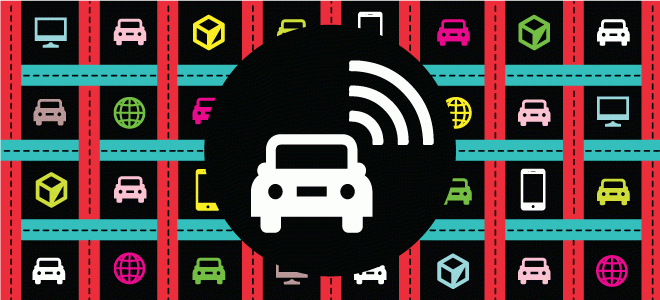
I can hardly wait for the “Internet of Cars” to become something we simply take for granted.
This includes cars that drive themselves (now legal in Californiaand licensed in Nevada), but also cars that:
- Find their own parking places
- And then remind us where we parked
- Monitor who is driving around us, and avoid those with bad driving records (awesome)
- Detect my mood and queue up appropriate music. (OK, this one is a littlefar-fetched. But not much.)

We are rapidly approaching a time when “car” could be as much of an anachronistic, catch-all term for a whole suite of functions as “phone” is for that internet-connected computing device in my pocket. In fact, cars may turn out to be the ultimate “mobile technology.” (Pun shamelessly borrowed from the Wired article I link to in the opening paragraph.)
Why is so-called “smart mobility” an issue for museums, and not just for impatient futurists? Because access is everything, and museums need to start thinking about how people will get to their museums in coming decades, and what opportunities and challenges this presents.
New museums now in the planning stages (or museums planning new buildings) may do well to develop their plans around transportation issues.. This includes not only technological trends, but also cultural trends. Millennials don’t have the same relationship to cars their parents and grandparents had. They have a lower rate of car ownership, and they drive less. According to the research firm Gartner, Forty-six percent of drivers aged 18 to 24 said they would choose Internet access over owning a car. Of course, the development of true “smart cars” may mean they don’t have to choose, but for now, the more people in this age group use the internet, the less likely they are to have a driver’s license.
 Many firms are already experimenting with alternatives to car ownership, if not car use per se. ZipCar was just bought by Avis-Budget. The traditional car rental firm thinks it can make the popular car share service (which only just began to break even) into a money-making proposition. Start-ups like GetAround, JustShareIt and Wheelz are experimenting with platforms that support peer-to-peer car sharing. The leading contender in this new market, RelayRides, is backed by GM and Google, so again—mainstream street cred. (That pun was mine.)
Many firms are already experimenting with alternatives to car ownership, if not car use per se. ZipCar was just bought by Avis-Budget. The traditional car rental firm thinks it can make the popular car share service (which only just began to break even) into a money-making proposition. Start-ups like GetAround, JustShareIt and Wheelz are experimenting with platforms that support peer-to-peer car sharing. The leading contender in this new market, RelayRides, is backed by GM and Google, so again—mainstream street cred. (That pun was mine.) Bicycle transportation is on the rise as well. More and more cities (e.g., Denver, Minneapolis, Chicago and Washington) are investing in Bike Share programs and expanding bike lanes and trails.
How might museums take these personal transportation trends into account?
- Make sure you have the information you need to assess how changes in transportation may affect your organization. If you don’t have data about how people get to your museum, start collecting it! If you do “non-visitor” surveys, be sure to ask about barriers to access, including transportation.
- Project potential financial impact. Do you depend significantly on income from parking? If so, you might want to create a scenario in which fewer people park, and pay, and start working out how to make up the lost revenue.
- If you are planning a new facility, think about how much to invest in parking infrastructure, and how to make it flexible and adaptive (so you are not, for example, stuck with a half-used parking garage that is designed in such a way as to be hard to re-purpose).
- Include alt transportation options in your marketing message, especially if you are targeting Gen Y. “Zip cars–they’re not just for runs to the grocery store or Ikea—take one to the museum!”
- Partner with commercial firms and city planners to make sure you have a car share and/or bike share station on or near your grounds.
I did a recent tweet-out, asking for examples of museums with Bikeshare/Carshare sites on their campus or nearby. Here are some of the replies. You can add to this collection in the comment section, below, or tweet to the attention of @futureofmuseums.
- SAMAart @SAMAart @futureofmuseums we do! we have a @bcycle station at SAMA + we are a river taxi station on the Museum Reach portion of the river #sanantonio
- Maren Dougherty @MarenReport @futureofmuseums There are @car2goSanDiego stations in @BalboaPark, home of these museums: balboapark.org/in-the-park/museums
- FLMNH @FloridaMuseum We have bike share within museum grounds and car share in adjacent lots,
- Diane Shaw @Museocat @futureofmuseums There are a lot of DC @bikeshare stations near museums on the Mall and elsewhere (map at capitalbikeshare.com/stations
- Jonny Brownbill @jonnybrownbill @futureofmuseums @MelbBikeShare adjacent to @melbournemuseum melbournebikeshare.com.au/station/museum-rathdowne-st










Comments